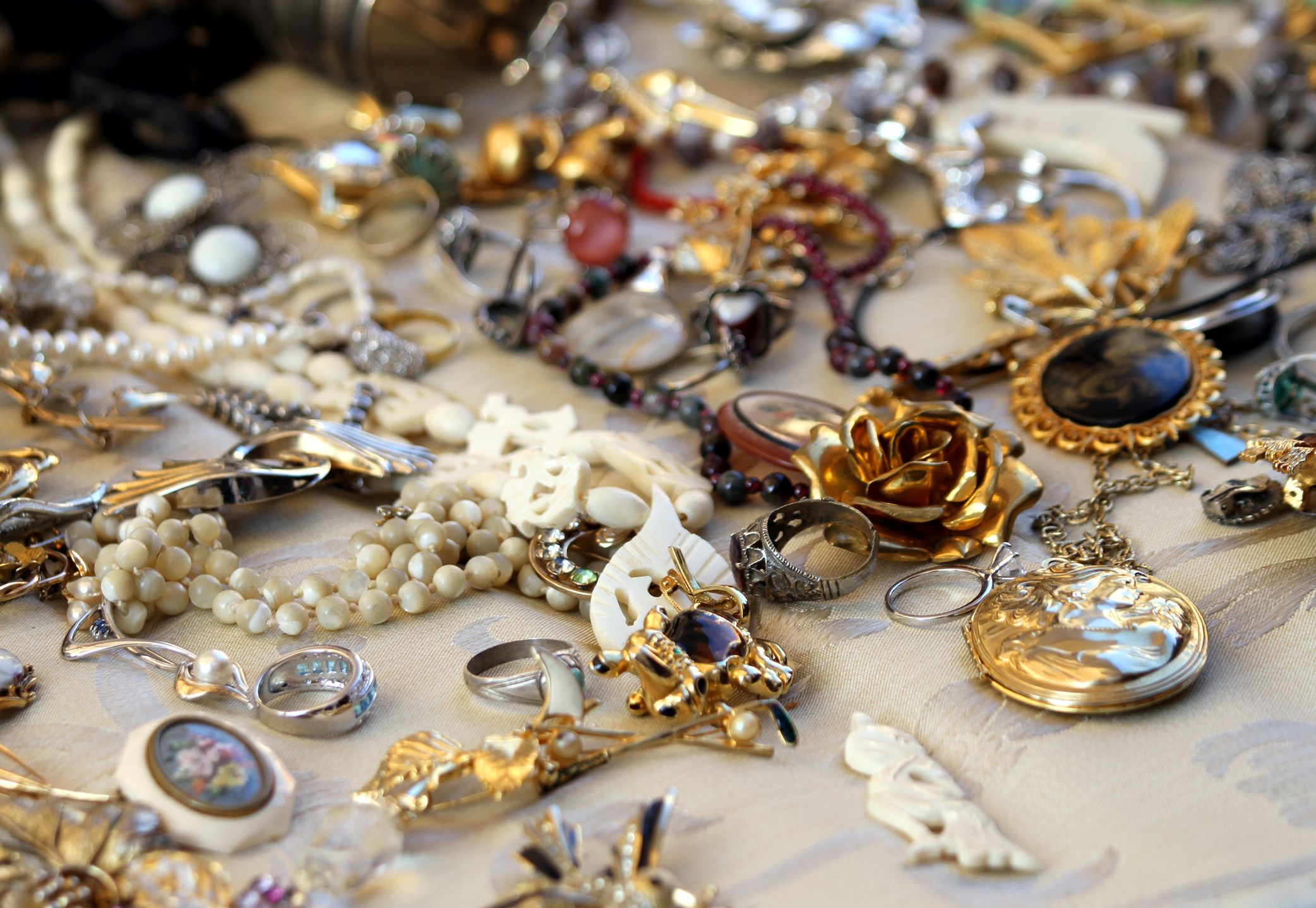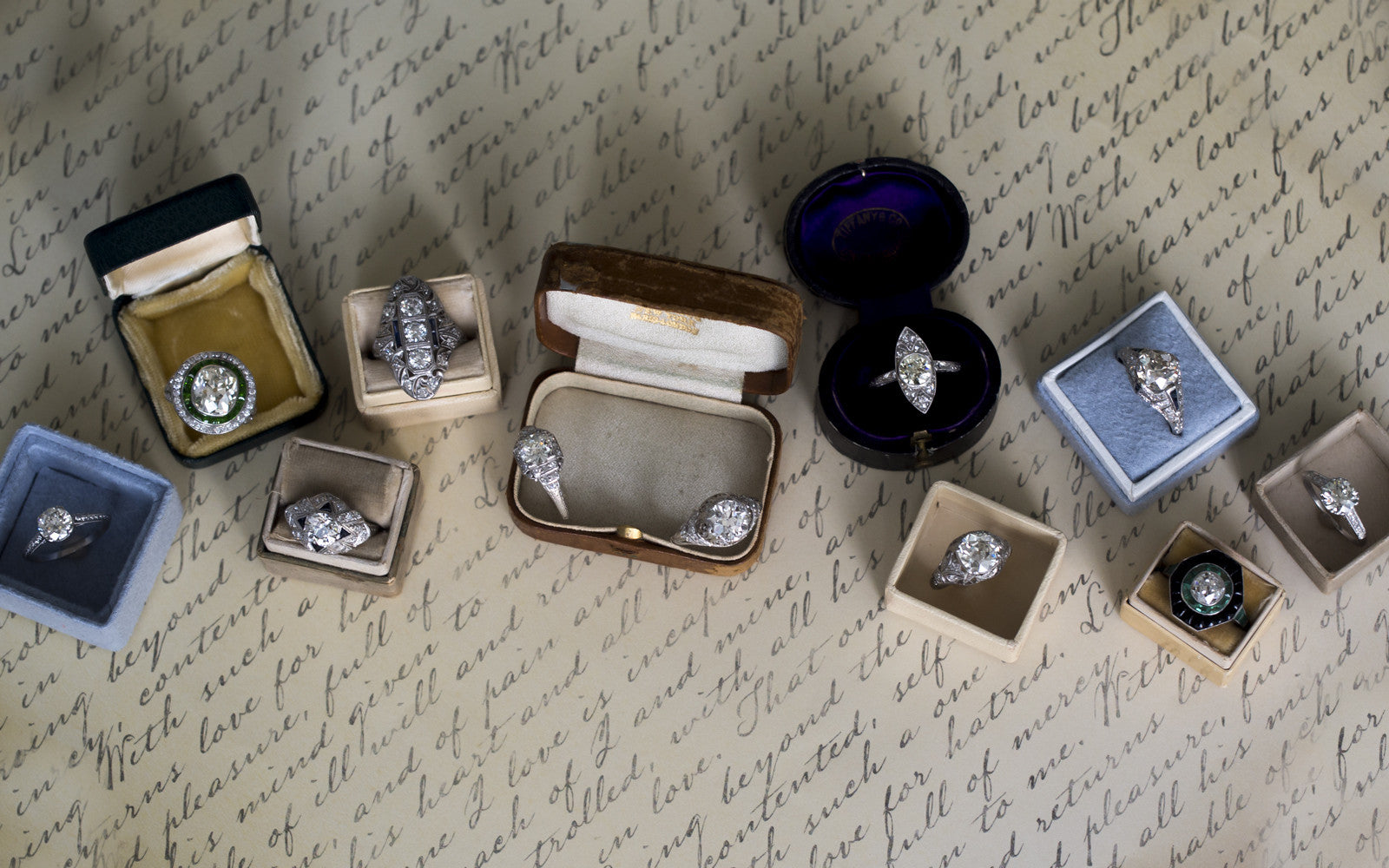Reveal the Rich Background Behind Stunning Estate Jewelry Collections
The exploration of estate jewelry collections supplies an one-of-a-kind home window into background, disclosing the detailed connection between workmanship and social development. What tricks might these collections still hold?
The Beginnings of Estate Fashion Jewelry
How did estate jewelry come to embody the rich background and artistry of bygone periods? The origins of estate fashion jewelry can be mapped back to different durations of craftsmanship, where fashion jewelry was not merely a device however a reflection of social values, technological developments, and creative expressions. Each item narrates, frequently connected with the lives of their previous proprietors, encapsulating individual stories alongside historic contexts.
The term "estate fashion jewelry" generally refers to pre-owned items, frequently from considerable ages such as Victorian, Art Nouveau, or Art Deco. These pieces were created with meticulous interest to information, showcasing the ability of craftsmens that made use of materials like gold, silver, and priceless gemstones. Unlike contemporary jewelry, estate pieces often feature distinct layouts that highlight the aesthetic appeals of their time, therefore serving as tangible web links to the past.

Notable Style Ages
Throughout background, several notable style eras have actually significantly influenced the evolution of estate jewelry, each identified by distinctive designs, materials, and social contexts. The Georgian period (1714-1837) marked the beginning of elaborate styles, commonly including nature-inspired motifs and using materials like gold, silver, and gems established in intricate settings. Following this, the Victorian period (1837-1901) presented romantic themes, with sentimental fashion jewelry and ingenious strategies such as using enamel and cameos.
The Art Nouveau duration (1890-1910) celebrated organic types and the beauty of nature, using products like opals and pearls in streaming designs. This was done well by the Art Deco age (1920-1939), which welcomed geometric patterns, strong colors, and luxurious products such as platinum and rubies, showing the modernist spirit of the moment.
The Mid-Century Modern period (1940-1960) showcased structured styles and the usage of unconventional materials, stressing minimalism and performance. Each of these periods not only mirrors the creative motions of their time yet also encapsulates the social worths and technological advancements that shaped fashion jewelry layout, making them a remarkable topic for collectors and historians alike.

Famous Estate Precious Jewelry Collections
The abundant history of estate jewelry is perfectly exhibited by several popular collections that display the creativity and workmanship from various layout eras. One of the most renowned is the Cartier Collection, which mirrors the high-end and innovation of the famous French jewelry expert. Pieces from this collection typically include intricate styles and exquisite gems, highlighting the brand name's dedication to fine workmanship.
One more noteworthy collection is the Duchess of Windsor's fashion jewelry collection, which consists of numerous distinct pieces, including the famous "Windsor" bracelet. This collection not just exhibits the sophistication of the Art Deco period yet also lugs a rich story of love and loss, as it belonged to Wallis Simpson, that notoriously wed Edward VIII.
The collection of the late actress Elizabeth Taylor likewise sticks out in the world of estate jewelry. With countless items designed by prominent jewelry experts like Bulgari and Cartier, her collection personifies prestige and refinement, highlighting her personal design and fondness for unique gems.
These renowned estate fashion jewelry collections function as a testimony to the enduring appeal of great fashion jewelry, providing understanding right into the imaginative and social activities that shaped their creation.
The Cultural Significance
Estate precious jewelry collections hold profound cultural value, showing not just the visual values of their corresponding periods yet additionally the historical and social contexts in which they were created. Each item typically personifies the workmanship and creative fads of its time, showcasing the advancement of layout and modern technology in jewelry making.
Additionally, these collections work as substantial web links to cultural customs and rituals. Wedding celebration bands and treasure breastpins may symbolize love and familial bonds, while items embellished with details gems can represent regional or cultural identities. The materials utilized-- whether gold, silver, or gemstones-- often inform stories of trade, exploration, and the wealth accumulation of societies.
In addition, estate precious jewelry can work as historic artifacts, giving insights right into the lives of individuals and the societal norms they browsed. The way precious jewelry was put on and valued can disclose much about gender functions, status, and personal expression within varying cultural landscapes. Because of this, estate fashion jewelry goes beyond plain embellishment, working as an abundant story of human experience, virtuosity, and social heritage, inviting contemporary audiences to engage with the past in a meaningful method.
Caring for Your Estate Pieces
Taking care of estate fashion jewelry pieces requires a thoughtful method to guarantee their longevity and protect their unique qualities. To keep the elegance of these treasures, it is necessary to manage them with care. Always clean estate fashion jewelry visit the site making use of a soft, lint-free fabric after each wear to remove oils and dirt. For much deeper cleansing, use a light soap service and a soft brush, taking care to prevent rough chemicals that may damage delicate products.
Storage space is similarly essential; shop pieces individually in a fabric-lined box to avoid damaging and tangling. Take into consideration making use of anti-tarnish bags or fabrics for silver things, as this helps to slow down the tarnishing process. Furthermore, prevent revealing fashion jewelry to too much wetness, extreme temperatures, or direct sunshine, which can negatively affect steels and gems.
Regular evaluations are crucial. Examine for loose stones, used clasps, or harmed setups, and seek expert repair work when needed. Consulting a jewelry expert experienced in vintage or antique pieces can provide customized care options. By applying these practices, enthusiasts can protect their estate precious jewelry's historic and aesthetic worth, guaranteeing these items remain to be cherished for generations ahead.
Conclusion
To conclude, the expedition of estate fashion jewelry collections exposes a tapestry of creative expression and cultural relevance, mirroring the values and aesthetic appeals of numerous historic periods. Once had them, each item offers as a testimony to extraordinary workmanship and the stories of those who. Recognizing the beginnings, style periods, and significant collections improves gratitude for these artifacts, highlighting their role in preserving social heritage and encouraging continued stewardship and treatment for these exceptional treasures.
The exploration of estate jewelry collections provides a special window right into history, disclosing the complex connection between workmanship and social evolution. The origins of estate jewelry can internet be traced back to numerous durations of craftsmanship, where fashion jewelry was not just an accessory but a representation of societal worths, technological advancements, and creative expressions.The term "estate jewelry" typically refers to used pieces, often from substantial periods such as Victorian, Art Nouveau, or Art Deco.The rich history of estate fashion jewelry is magnificently exemplified by numerous prominent collections that display the virtuosity and craftsmanship from various design periods.In verdict, the exploration of estate precious jewelry collections reveals a tapestry of creative expression and social significance, reflecting the values and aesthetics of different historic view it durations.